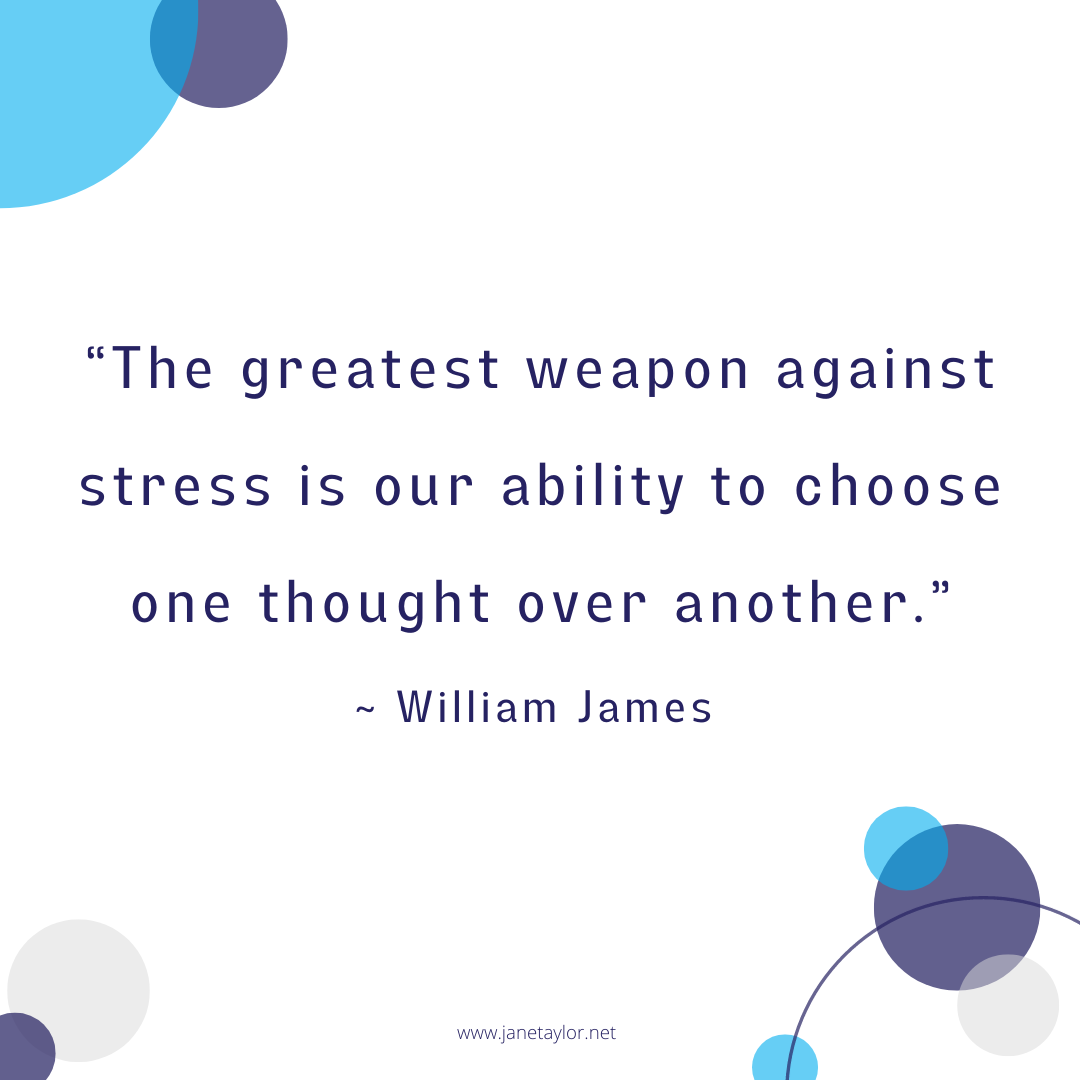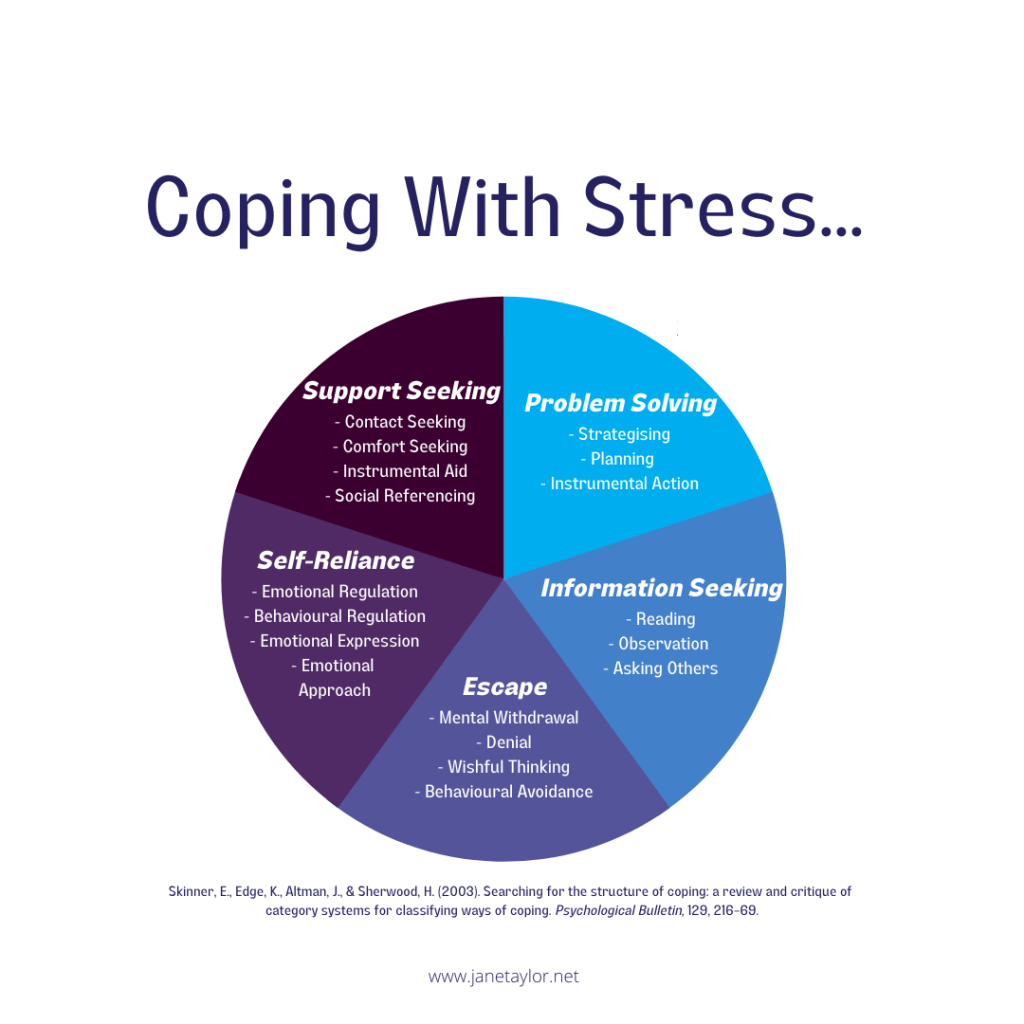What is Coping and What Are Coping Strategies?

When you experience stress, what do you do? Are you conscious of your coping strategies or not?
Today on the journal I wanted to discuss coping and the different coping strategies and tools we use to adapt to stress and transform the challenges we experience in life. Because, let’s face it we all experience stress throughout our lives.
What is Coping?
There are many definitions on coping, including –
- “the process of contending with life difficulties in an effort to overcome or work through them.” ~ Medical Dictionary / the Free Dictionary, or
- “constantly changing cognitive and behavioral efforts to manage specific external and internal demands that are appraised as taxing or exceeding the resources of the person.” ~ Lazarus and Folkman.
After reading the above definitions on coping – what does it mean for you?
What Are Coping Strategies?
According to Skinner and Zimmer-Gembeck (2007) –
“A coping strategy refers to “how people respond to stress as they contend with real-life problems” (Skinner and Zimmer-Gembeck.” (p.124).
Coping strategies are ways we use to deal with, alleviate and manage stress within life. Coping strategies can be emotional, cognitive, behavioural or a combination of all three. And, when it comes to coping strategies, we need to (un)learn what is best for us. I say (un)learn as each of us is unique and the strategy we used when we were younger may not be useful today.
Over time, researchers have generally tried to categorise the different ways of coping. For example –
- problem-focused coping versus emotion-focused coping,
- problem-focused coping vs. emotion-focused coping vs. appraisal-focused coping,
- engagement vs disengagement, and
- approach versus avoidance and many others.
However, this has proved limiting and a hierarchical model of coping evolved.
The Hierarchical Model of Coping
Skinner and colleagues (2003) developed a hierarchical conceptualisation of the structure of coping. The structure includes – coping families, ways of coping and then coping instances. For example –
- Coping Family or Family of Coping – includes the ways ways of coping that serve that same set of functions. For example – problem-solving is the coping family and includes the ways of coping – strategising, planning and instrumental action.
- Ways of Coping – relates to a broader category of coping that explains specific coping instances. For example – reading a book on creating boundaries would fall under the way of coping “reading”.
- Coping Instances or Instance of Coping – is a specific action that a person takes to deal with a stressor. For example – a person call a friend to ask for help in relation to a specific situation. Basically an instance of coping is the answer to the question, “What did you do exactly to deal or cope with this situation?”.
Coping Strategies – Helpful or Unhelpful?
As you will see in the following diagram there are many different coping strategies. I have only included 5 of the twelve families and the associated ways of coping from that particular piece of research.

One thing I have come to realise over time is that human beings are very resilient and use coping strategies to survive and deal with stressful situations. Today, some of the strategies that we used in the past may need an overhaul as they are no longer serving us.
For me a personal example of this is eating chocolate. I know when my stress levels are getting higher, I turn to chocolate. I am aware of this NOW, however in the past I was not, as chocolate was one way I comforted myself to deal with stress in my life (or some would say a maladaptive coping strategy). Yes some people may refer to that as emotional eating, however I think it is pretty clever that the little Jane thought of this coping strategy when she was younger and used it to get through hugely stressful experiences / times in her life. Now the different is that I can choose when I eat chocolate, why I eat it and how I eat it as I have become much more aware of my own coping strategies and stress levels.
Over to You…
I hope this post has given you some insight in to coping and coping strategies. Remember the coping strategy that worked for you in the past may not be as useful today, so be kind to yourself as you discover what works best for you now 🙂
If you are ready to reclaim your courage and take the next step towards freedom and opening your heart, why not join our Toolkit?
References –
Lazarus, R., & Folkman, S. (1984). Stress, Appraisal, and Coping. New York, USA: Springer.
Skinner, E., Edge, K., Altman, J., & Sherwood, H. (2003). Searching for the structure of coping: a review and critique of category systems for classifying ways of coping. Psychological Bulletin, 129, 216–69.
Skinner, E., & Zimmer-Gembeck, M. (2007). The development of coping. Annual Review of Psychology, 58, 119-144.
